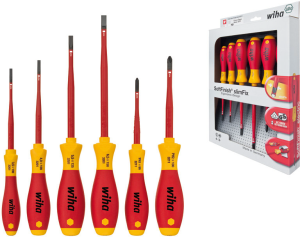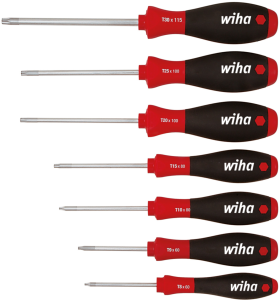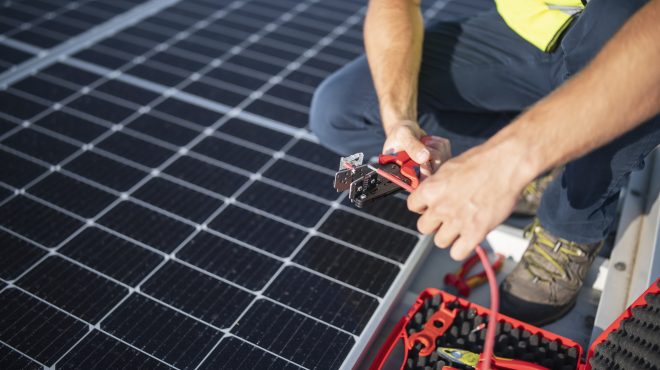
Workplace Health in Craft Buisnesses
Health at work is a topic that is often neglected in craft businesses. But it is precisely here that the stresses on the body are particularly high. Learn all about helpful ergonomic and protective measures, such as the use of balancers, to make your company's workplace ergonomic.
Helpful ergonomic and protective measures for your craft business
Health problems, back pain and tension – the everyday working life of many people is accompanied by this. The result: long periods of absence. But many complaints can be prevented quite simply: through ergonomically designed work processes and the use of various protective devices. They prevent unnecessary strain, reduce fatigue and promote the performance of the workers.
We now provide you with helpful tips on ergonomic and protective measures that improve everyday working life in many ways.
The right hand tool
Calluses, blisters, bruises, strains and weakness when tendons and nerves are overstressed – to minimise work-related health risks, ergonomic hand tools should definitely be used. They are exactly adapted to the geometry and mobility of the human hand and meet high requirements:
- better use of force by adapting to body size and shape
- reduced strain on the skeletal muscles due to the adaptation to the mobility of the hand
- comfortable and safe holding of tools due to correct hand position
- Precise working and better tool guidance via sensor feedback on the handles
By the way: With the right hand tools, even back health can be promoted. How? The strain on every muscle and every bone or joint always affects the entire body – and thus also the back. Ergonomic handle size concepts, such as those designed by Wiha, the pioneer in health-oriented tool making, make a significant contribution to maintaining and improving health.
Ergonomic aid: spring balancers and balancers
Spring balancers and/or balancers are extremely helpful additions to the tool guide. They help to design the workplace ergonomically and provide physical relief.
Balancers can hold weights of up to 200 kg depending on the model and can be moved effortlessly in a vertical plane. A conical rope drum provides an almost constant retraction force over the entire rope length. The load therefore remains in the position in which it is released. The balancers are used when lifting manual devices in production.
Spring balancers are primarily used to hold tools such as electrical appliances or soldering irons. Their load capacity is up to 14 kg. The rope movement is carried out by means of spiral rope drums and spiral springs. Each retractor provides a constant pulling force. A distinction is made between classic spring balancers and spring balancers with locking or locking function. With classic spring balancers, the suspended tool is automatically retracted to its original position. Spring balancers with locking function can hold the tool at a fixed height.
The advantages of balancers and spring balancers:
- Heavy loads are easily and safely transported and moved.
- Tools are protected against falling at all times.
- The use of balancers and spring balancers is easy on the back and joints.
- The fatigue-free lifting of loads and tools increases the productivity of the employees and the quality of the work.
Balancers and spring balancers, such as those from Aero-Motive and Endo, are useful utensils for physical relief in mechanical and plant engineering and assembly work.
Comprehensive protection against harmful particles, vapours and gases
Respiratory masks
Carpenters, painters, varnishers, welders, chemists or metalworkers – many people are exposed to many dangers from polluted ambient air every day. Contact with released vapours and gases, as well as with grinding dust from various materials (e.g. varnish, paint, wood, stone or metal) can have a negative effect on health.
Respiratory masks and bonnets guarantee effective protection. They prevent gases and particulate matter produced by grinding, milling or drilling from entering the respiratory tract and causing illness.
There are different models depending on the area of application: Breathing air-independent masks are generally used when certain limit values in the ambient air are exceeded. They work on the basis of an oxygen tank (or similar device) through which the breathing air is supplied. With breathing-air dependent masks, the ambient air is cleaned by a filter and only then reaches the mask wearer. Here too, there are different devices depending on the area of application.
Extraction units and absorbers
Many work processes, such as soldering, gluing, welding and laser applications, generate fine dust particles and gases that are harmful to users and the environment. Anyone who has to deal with soldering, laser processing or with sticky and moist types of dust as well as hazardous vapours and gases should definitely use an extraction unit. By using various filters, these devices trap harmful particles and feed the cleaned air back into the workplace.
Caution is required, especially with soldering work and the use of fluxes. The generally accepted opinion that switching to lead-free soldering is healthier and more environmentally friendly is unfortunately not correct. The soldering fumes from lead-free soldering applications contain considerably more respirable fine dust. By using more flux at higher temperatures, smaller particles are released in larger quantities. If these reach the respiratory organs unhindered, this can have serious consequences, such as asthma or even lung cancer. The following therefore applies: When soldering in closed rooms, it is essential to provide sufficient ventilation or a (mobile) soldering fume extraction system.
With the extraction solutions, a distinction is made between punctual extraction directly at the soldering tip and surface extraction. With soldering irons, the extraction tube is positioned above the soldering tip and is permanently installed. In this way the dirt can be extracted directly at the source.
A surface extraction system, such as the Weller® system, is ideal for extracting larger work surfaces, especially for soldering baths, hot air soldering or bonding work. Mobile systems can clean up to eight workstations simultaneously.







